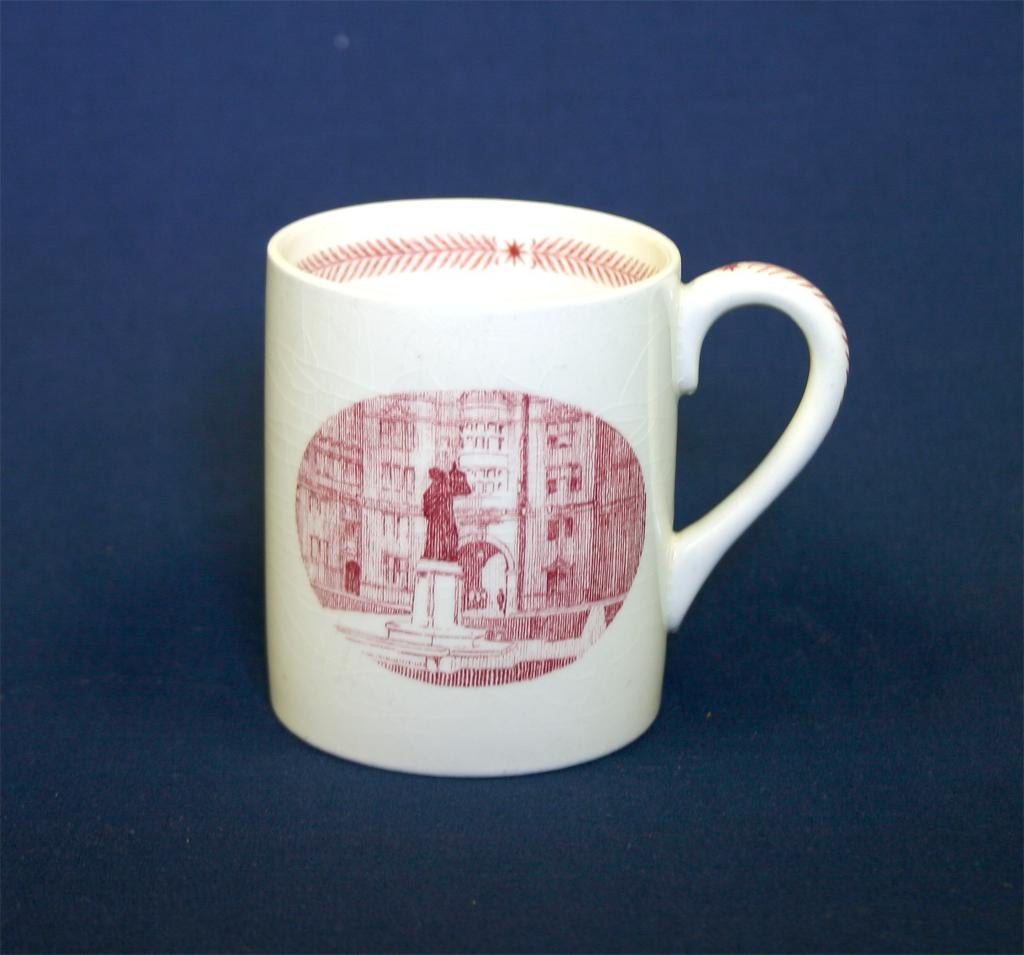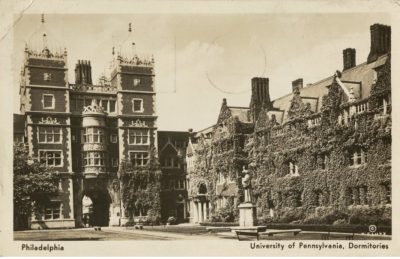Artist: William Pope Barney (1890-1970)
William Pope Barney drew the sketch of the Whitefield and Memorial Tower which appears on a University of Pennsylvania Bicentennial Wedgwood china demitasse cup. He was born in Columbus, Georgia in 1890. He earned his first degree of Bachelor of Science in Architecture from the Georgia Institute of Technology in 1911. The following year he earned his second degree of Bachelor of Science in Architecture, this time from the University of Pennsylvania. In 1913 he earned the degree of Master of Science in Architecture also from Penn.Before World War I, Barney worked in the firms of Paul Cret and Milton Medary. While working in Medary’s firm he was instrumental in the design of the Philadelphia Museum of Art. During World War I he served in the U.S. Army Corps of Engineers, and during World War II he was in the Air Corps and the Air Reserve. After World war I, Barney worked in the firm of Frank Miles Day. In 1921 he was awarded the Henry Gillette Woodman Scholarship for study in Europe. He later opened his own firm, and worked under his own name or with partners until his retirement in 1958.
Subject: Whitefield Statue and Memorial Tower
The George Whitefield Statue and Memorial Tower is a part of the Quadrangle dormitories designed in the early 1990’s by Walter Cope and John Stewardson.Because Provost William Pepper believed dormitories would be beneficial for students at the University, he sponsored a contest for the design of the dormitories. This 1892 contest was won by Walter Cope and John Stewardson. To create a more vibrant atmosphere, these two architects decided to build the dormitories of red brick and limestone rather than the gray stone used for most buildings already existing on campus. The idea for their design was inspired by the dormitories at several universities in England. The “Quad,” as it is known, was mostly built between 1894 and 1929. The two-block long quad is broken into many houses named for individual donors to the University of Pennsylvania. The Memorial Tower, serving as the gateway to Spruce Street, is at the east end of the large triangle area of the Quad.
The Whitefield statue is located in front of Morris and Bodine sections of the present Ware College House. This bronze statue, created by R. Tait McKenzie, was unveiled in 1919.
George Whitefield (1714-1770), an 18th century Anglican minister, was widely known in Britain and in the American colonies for his role in the spread of the Great Awakening evangelical movement. Educated at Oxford and friends with John and Charles Wesley, Whitefield first came to North America as a parish priest in Savannah, Georgia, in 1738. He returned to England for ordination the following year. Then, in 1740 he made his second trip to the North American colonies where he travelled throughout the colonies, preaching to large crowds, with crowds sometimes numbering in the thousands. These revival meetings, largely held outdoors, became known as the Great Awakening of 1740.In Philadelphia, supporters built a meeting house at Fourth and Arch streets to serve as a charity school and a meeting place for Whitefield’s revivals. Benjamin Franklin attended some of Whitfield’s outdoor revivals in Philadelphia and was impressed by Whitefield’s intellectual abilities. Franklin published some of Whitefield’s writings and became a lifelong friend of Whitefield. And in 1749, Franklin chose the Whitefield meeting house, with its Charity School, to be purchased as the site of the newly formed Academy of Philadelphia which opened in 1751, followed in 1755 with the College of Philadelphia, both the predecessors of the University of Pennsylvania.
Architects: Cope and Stewardson




